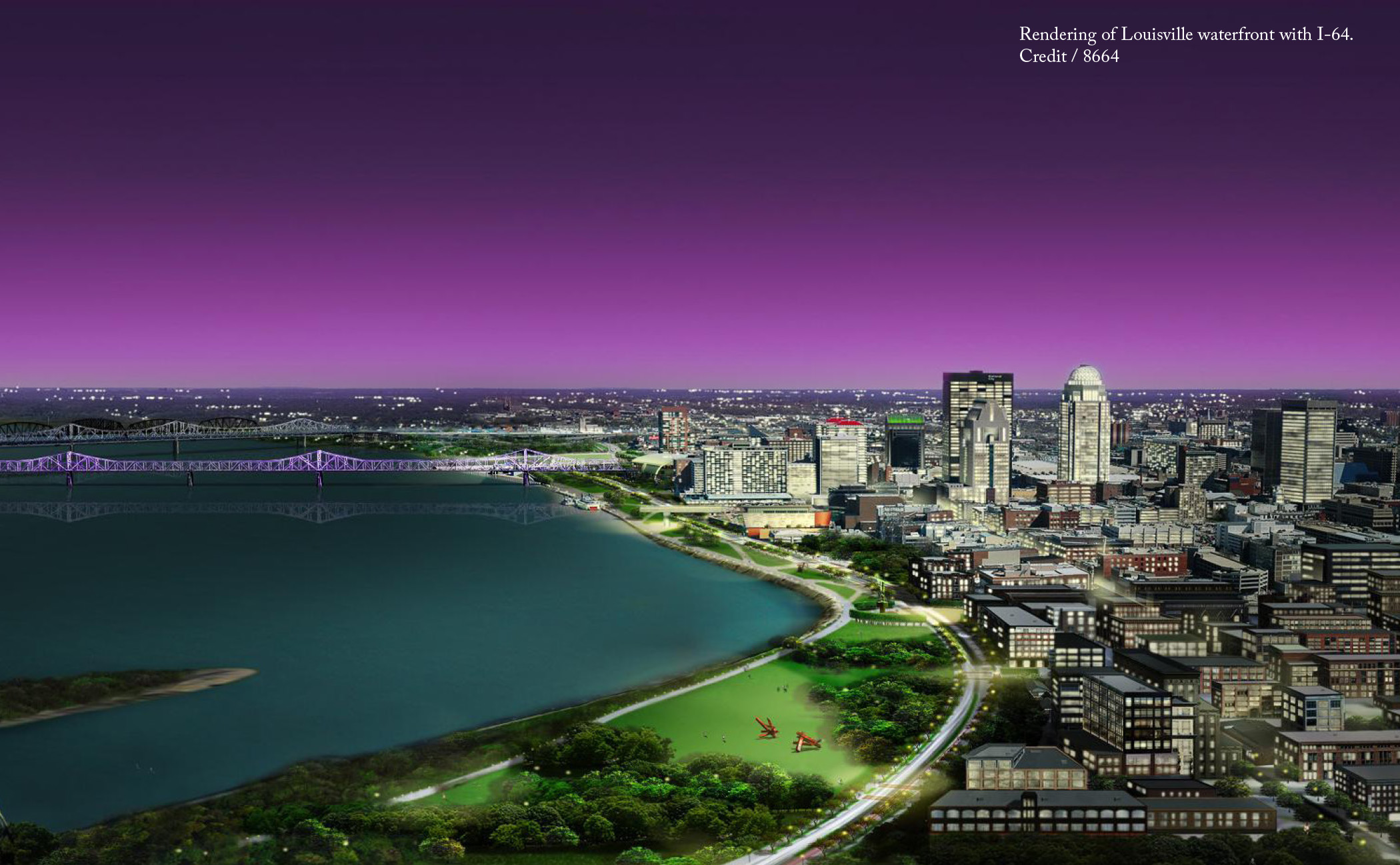- Who We Are
- What We Do
- Our Issues
- Our Projects
- Sprawl Retrofit
- Highways to Boulevards
- CNU/ITE Manual
- Health Districts
- The Project for Code Reform
- Lean Urbanism
- LEED for Neighborhood Development
- Missing Middle Housing
- Small-Scale Developers & Builders
- Emergency Response
- HUD HOPE VI
- Rainwater in Context
- Street Networks
- HUD Finance Reform
- Affordable Neighborhoods
- Autonomous Vehicles
- Legacy Projects
- Build Great Places
- Education & Trainings
- Charter Awards
- Annual Congress
- Athena Medals
- Resources
- Get Involved
- Support CNU
- Public Square
History and Context
Built in 1976, I-64 runs the length of Louisville’s downtown waterfront, in many parts directly along the river’s edge. For decades, the highway has created a formidable barrier between the city and arguably its most significant amenity, its waterfront. While other parts of Louisville have enjoyed a revitalized waterfront, the same cannot be said for area between 22nd Street and the Clark Memorial Bridge. Here, the highway occupies the land directly adjacent to the water, with only a narrow riverwalk as greenspace.
Proposal
Starting in 2005, citizen group 8664 campaigned to reclaim this land for the city. In place of I-64, Louisville would gain an expanded waterfront park with a parallel parkway. The four-lane parkway would be designed with pedestrians in mind, with frequent crossings, street trees on both sides, and a green median along its center. Although able to handle vehicle traffic, its primary goal would be to facilitate access to the waterfront to those who live, work, and visit downtown.

The transformation of this two-mile stretch along the river between I-65 and I-264 would free over 60 acres of land around many of Louisville’s landmark civic features, including the Muhammad Ali Center and the Louisville Slugger Museum & Factory. Much of this land could be devoted to parklands and pedestrian access to the river, which would further strengthen the city’s cultural assets.
Private property owners would see benefits too. Where waterfronts have been carefully saved or reclaimed as public space, a zone of enhanced value radiates out from the waterfront for distances of a quarter to a half mile. For Louisville, this means an area of roughly 60 to 120 city blocks would rise in property value.
Furthermore, with a combination of tweaks to existing traffic patterns, the 8664 proposal meets demands for projected traffic volumes. Through-traffic along I-64 would be re-routed to I-265, Louisville’s outer beltway, which increases travel distances by only five miles. The combination of the new four-lane parkway and existing east-west streets along the riverfront corridor can handily accommodate the remaining 80,000 cars per day that use I-64 for local destinations.
8664 was formed in response to the Ohio River Bridges project, a joint venture by the States of Kentucky and Indiana that proposed the expansion of the Kennedy Memorial Bridge downtown and the construction of a second bridge eight miles upstream. 8664 opposed the expansion of the bridge downtown and saw this as an opportunity to re-envision the city’s waterfront as a place for people, not cars. Although 8864’s alternative fell within the bounds of the Ohio River Bridges’ environmental impact assessment and the group gathered the support of 11,000 petitioners, the $2.6 billion construction of the bridges proceeded unaltered.


















